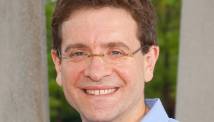STORY HIGHLIGHTS
- NEW: NRA's LaPierre: If this idea is crazy, "then call me crazy"
- NEW: Sen. Lieberman says NRA is willing to deal with every possible cause "except guns"
- The gun control debate was reignited by the mass shooting at Connecticut elementary school
- Hutchinson tells CNN his panel will give educators instructions on placing guards in schools
(CNN) -- The National Rifle Association made clear Sunday it will not budge on its opposition to any new gun laws, despite heated criticism of the organization's response to the Connecticut school massacre.
"I know this town wants to argue about gun control," the group's CEO, Wayne LaPierre, told NBC's "Meet the Press" in Washington. "I don't think it will work."
LaPierre stood by remarks he made at an event Friday billed as a news conference -- though he took no questions -- in which he argued for armed guards in schools.
"If it's crazy to call for putting police and armed security in our schools to protect our children, then call me crazy," he said on Sunday.
He added that in Friday's news conference, "I said what I honestly thought and what millions, and hundreds of millions, of people all over this country believe will actually make a difference."
"We're going to support an immediate appropriation before Congress to put police officers in every school," he vowed.
Legislation being pushed by Sen. Dianne Feinstein, D-California, to restore an assault weapons ban is not going to make kids any safer, LaPierre insisted.
Read more: Gun owners fear new laws
Pressed on whether high-capacity magazines should be banned, limiting the number of bullets that can be fired from a single weapon without reloading, LaPierre said no. "There are so many different ways" that a "monster" could carry out a massacre, as Adam Lanza did in Newtown, Connecticut, LaPierre argued.
He would not express support for any new gun restrictions, saying most gun laws on the books are currently rarely enforced.
"I know there's a media machine in this country that wants to blame guns every time something happens," he said, adding, "I know there's an anti-Second Amendment industry in this town."
The NRA supports efforts to improve mental health care in the country in hopes of avoiding such nightmare scenarios, LaPierre said.
Meanwhile, Asa Hutchinson, the man charged with developing the NRA's program to place armed guards in schools, told CNN his "high-level panel of experts" will present educators with safety options and detailed instructions.
Sen. Joe Lieberman, an independent from Connecticut, told CNN, "I have found the statements by the NRA over the last couple of days to be really disheartening, because the statements seem to not reflect any understanding about the slaughter of children that happened in Newtown. ...
"The NRA spokespeople have been willing to deal with every possible cause of gun violence, except guns. They're right that there's a problem for our society -- how do you spot a child or a person who is troubled before they become a killer? What's the influence of violence in our entertainment culture on people? But it's obviously also true that the easy availability of guns, including military-style assault weapons, is a contributing factor, and you can't keep that off the table. I had hoped they'd come to the table and say, everything is on the table."
Lanza shot his way into Sandy Hook Elementary in Newtown and killed 20 children -- none of them older than 7 -- and six adults. He used a Bushmaster AR-15 rifle to mow down his victims before killing himself with one of the two handguns he was carrying.
On Friday, a week after the shooting, LaPierre spoke out for the first time on the massacre, blaming video games and the media, while also proposing an armed guard in every U.S. school. "The only thing that stops a bad guy with a gun is a good guy with a gun," he said.
Some gun owners and mostly Republican officials rallied around LaPierre, and some -- such as Texas Gov. Rick Perry -- have indicated they support putting armed guards, or even teachers with concealed weapons, in schools.
Read more: NRA breaks silence after shootings
CNN iReporter Jason Asselin applauded the NRA's stance, proposing that U.S. troops returning from war zones could serve as armed guards. "Right now, our schools remain unprotected," he said. "Action is needed. Our children deserve to be protected."
But most of the reaction to LaPierre was negative.
Democratic Sen.-elect and U.S. Rep. Chris Murphy, whose district includes Newtown, called LaPierre's words "the most revolting, tone-deaf statement I've ever seen." New York Mayor Michael Bloomberg, an independent, blasted them as "a shameful evasion of the crisis facing the country." And former Republican National Committee Chairman Michael Steele said he found the remarks "very haunting and very disturbing."
This wave of criticism continued into the weekend.
Would your gun fall under the '94 weapons ban?
New York's tabloids, normally political polar opposites, offered the same take: The Daily News' headline called LaPierre the "Craziest Man on Earth," while Rupert Murdoch's New York Post ran with, "Gun Nut! NRA loon in bizarre rant over Newtown."
Rick Huffman, another CNN iReporter and a retired police officer, cut up his NRA membership card in the wake of the mass shooting, which he said changed his views on gun control.
"There's got to be a limit to what they let citizens have at their disposal," the Michigan resident said.
Both sides, at least, appear to agree something needs to be done to prevent more mass shootings like what happened December 14 in the once quiet Connecticut town. President Barack Obama used his speech at a prayer service for the massacre's victims to call for action and subsequently tapped Vice President Joe Biden to lead a group charged with coming up with solutions.
Polls suggest that, after Newtown, the American public is increasingly open to measures such as a ban on assault weapons, which was in effect in the 1990s until it lapsed in 2004.
A CNN/ORC poll conducted after the shooting shows that a slight majority of Americans favor restrictions on guns. Conservative Democrats and some Republicans who have supported gun rights have said they are open to discussing gun control.
In a speech last Sunday night, Obama insisted inaction was not an option, especially when it comes to protecting children.
"We can't tolerate this anymore," the president said, alluding not only to Newtown but three other mass shootings over the past two years. "These tragedies must end. And to end them, we must change."
Opinion: Don't let this moment pass without acting on gun control













